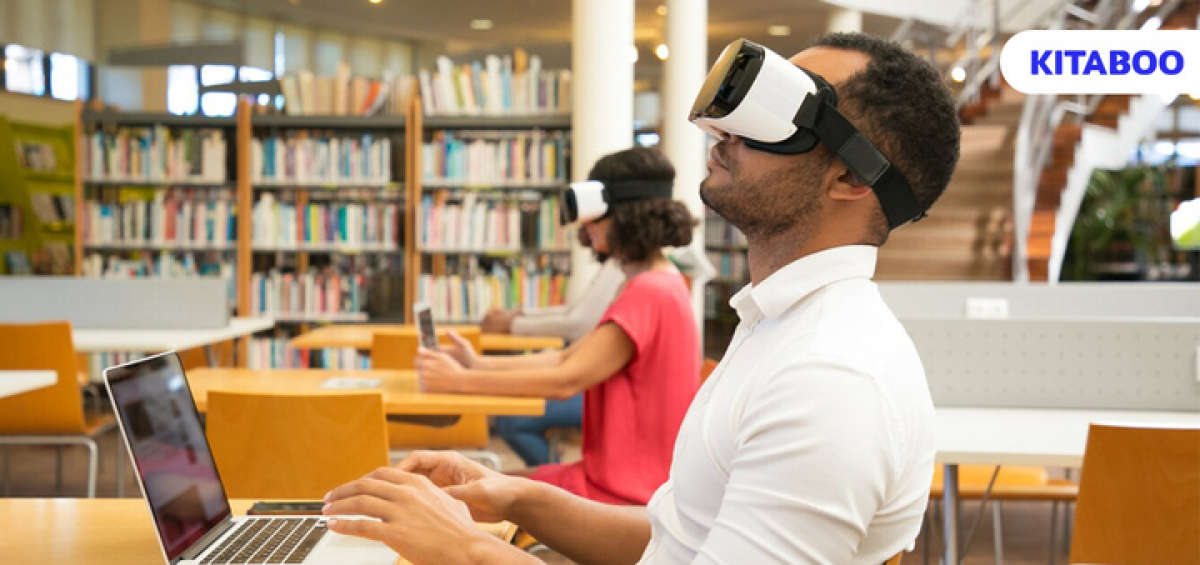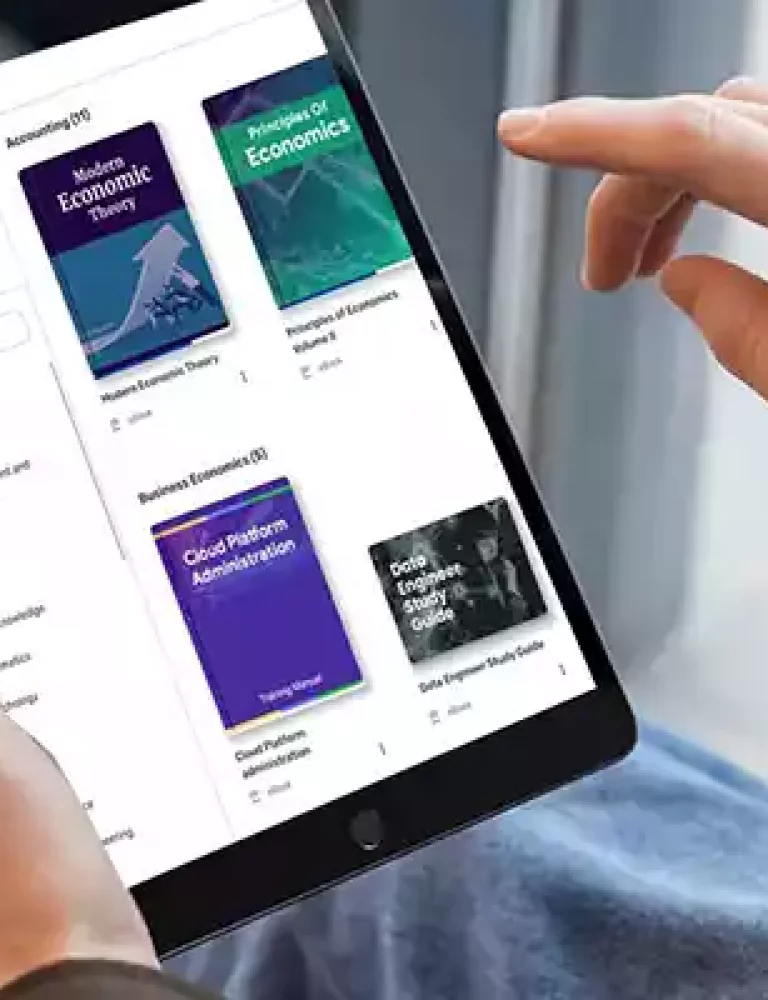The education landscape is undergoing a dynamic transformation driven by technological advancements. As the eLearning market is projected to reach $336.98 billion by 2026, it’s evident that students and faculty increasingly expect interactive, digitally optimized educational resources.
This shift goes beyond replacing traditional textbooks with eBooks. Today’s digital resources are interactive and easily accessible, catering to the needs of a diverse student body.
For instance, digital textbook platforms like KITABOO have emerged as powerful tools that engage students with multimedia content, interactive quizzes, and collaborative features. It helps them master complex concepts in a more dynamic and personalized manner.
Read on to explore how K12 editorial directors can utilize the power of technology to elevate educational content and foster a more engaging learning environment.
Table of Contents:
I. Understanding the Role of Technology in Education
II. Latest Technological Advancements in Education
- Personalized Learning for Increased Retention
- Digital Classroom and Libraries for Easy Access to Information
- Learning Soft Skills in a Flipped Classroom
- Online Tools for Building Teamwork
- Using VR and AR for an Immersive Learning Experience
- Gamification of Content to Increase Engagement
- Specialized Software to Streamline Administration
- Professional Learning and Development for Educators
III. Conclusion
Understanding the Role of Technology in Education
Planning a technological infrastructure is necessary to meet the agency’s goals related to K12 teaching and learning. When utilized the right way, technology can create personalized and enhanced learning experiences for the student.
Teachers can easily curate learning materials which are accessible through smart devices.
Some of the benefits of digital technology in education include:
- Using adaptive softwares and personalized content, students can learn at their own pace which increases retention power.
- With the advent of gamification in education, the learning and tutoring experience has become an interactive student engagement process.
- Digital technology provides increased access to resources from any part of the world. This makes it easier to find information that might be unavailable in a traditional classroom.
Education providers can provide superior K12 education levels through data analysis. This can be done on KITABOO‘s digital textbook platform, which comes with data analysis capabilities to finetune the education strategy.
Latest Technological Advancements in Education
In recent years, technology in education has brought about multiple trends, which in turn has reshaped the K12 educational sector.
Here are some popular trends that have emerged as the latest technological advancements in education:
1. Personalized Learning for Increased Retention
A personalized learning environment can be created using data analytics. It can be used to make specific resources available to students whenever necessary. Institutions can identify students who might be at risk of falling behind and provide them with immediate guidance.
2. Digital Classroom and Libraries for Easy Access to Information
With the help of BYOD or Bring Your Own Device to the classroom, students and teachers can provide instant feedback or answers. During quiz sessions, students can use their smartphones, laptops, or tablets to answer certain questions with references.
The presence of digital classrooms and resources enables students to learn about remote workplaces. Online libraries with eBooks and PDFs encourage students to learn and search for information at any time of the day.
For instance, take how KITABOO‘s digital textbook platform enables K12 teachers to create flashcards and chapter summaries that will make revision much easier. This eventually helps students grasp concepts more effectively.
3. Learning Soft Skills in a Flipped Classroom
Flipped classrooms allow students to take up the roles of their teacher. In this way, they learn various soft skills necessary for academic development.
Within this innovative framework, students are assigned topics to elucidate using diverse multimedia tools such as PowerPoint presentations, video creation, or podcasts.
This collaborative learning approach not only boosts group dynamics but also equips students with the ability to lead and deliver effective presentations, thereby honing valuable soft skills essential for their overall development.
4. Online Tools for Building Teamwork
The use of emails, online student portals, and messaging apps facilitates communication between the teacher and the student. Such tools also help in building a strong parent-teacher relationship, which is important for the student’s academic performance.
With the help of Google Docs, students are asked to edit each other’s work in a collaborative manner which leads to team-building skills.
5. Using VR and AR for an Immersive Learning Experience
For a more immersive learning experience, K12 educators choose extended reality software that uses virtual reality and augmented reality.
Students can visit any part of the world virtually and learn about the environment in a more in-depth manner. The visuals help certain students to retain knowledge more easily and keep them interested in learning new things.
6. Gamification of Content to Increase Engagement
With gamification, faculty members can use interactive learning programmed and game-based elements to teach.
Games are known to increase engagement levels and teach real-life skills such as quick thinking and fast typing. These make the classes fun and interesting for the students. At the same time, teachers can track their performance and provide feedback.
GBL, or Game-Based Learning, promotes learning in the best way possible. It can be introduced through digital textbook platforms like KITABOO, which offer interactive methods of learning through stimulating content.
7. Specialized Software to Streamline Administration
Software is now available with automation features that help to organize and streamline the administration process. Track student records and manage admissions efficiently with data accuracy.
The software helps to reduce the workload and minimize errors. With the use of data analytics, institutions can make informed decisions. Tracking student performance is essential to understand where improvement is needed.
8. Professional Learning and Development for Educators
The integration of technology in education has benefitted professionals and K12 educators as well. It has enabled teachers and learners to opt for online professional development courses. This helps them to provide quality education by staying up to date with the latest teaching methods.
Through digital training, teachers learn about the best pedagogical methods to use in a digital classroom. This way, they acquire the skills and knowledge needed to navigate the evolving landscape of education.
Conclusion
To ensure educational inclusivity for both students and staff, organizations must prioritize the adoption of optimized digital content. This includes setting a primary objective before initiation, factoring student access to technology, and analyzing metrics before starting the process.
For those seeking expert guidance in seamlessly incorporating technology into Education, KITABOO offers transformative digital textbook services. Its advanced technology creates a customizable and interactive learning platform for all kinds of learners based on their goals and needs.
Write to us at KITABOO@hurix.com today to learn more!
Discover How An Ebook Conversion, Publishing & Distribution Platform Can Help You
Kitaboo is a cloud-based content platform to create-publish & securely distribute interactive mobile-ready ebooks.
You May Also Like
-
Create eBooks Like a Pro in 2024: Insider Tips & Tools
Blog,Digital Publishing,eBook solution / February 20, 2024







